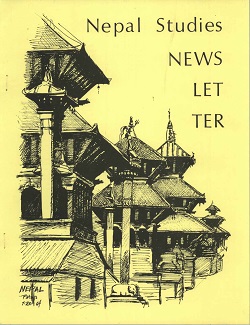Author Biography
Barbara Gerke (D.Phil., M.Sc., University of Oxford) is a social and medical anthropologist currently leading a three-year FWF (Austrian Science Fund) project (2018–2021) on ‘Potent Substances in Sowa Rigpa and Buddhist Ritual’ at the University of Vienna, where she also held a Lise- Meitner senior research fellowship (2015-2018) researching biographies of Tibetan precious pills. She is the author of Long Lives and Untimely Deaths: Life-Span Concepts and Longevity Practices among Tibetans in the Darjeeling Hills, India (Brill 2012) and Taming the Poisonous: Mercury, Toxicity and Safety in Tibetan Medical Practice (Heidelberg University Publishing, forthcoming).
Abstract
Turquoise, coral, rubies, diamonds, amber, and pearls are among the potent substances used in Tibet’s medical traditions, specifically in ‘precious pills’ or rinchen rilbu (rin chen ril bu). Tibetan physicians use precious stones as medicines only after processing, without which none of them are considered medically beneficial. In this paper, I analyze three precious substances—turquoise, coral, and pearl—which appear together in many precious pill formulas and are processed using the same techniques. Based on textual analysis and interviews with Tibetan physicians in India, I address the questions: What makes these substances particularly ‘potent,’ expressed in the Tibetan term nüpa (nus pa)? How and why are these substances processed for use in medicines, and how is processing linked to nüpa? I argue that Tibetan medical practitioners authenticate their tradition of using precious stones as potent substances primarily through relying on authoritative texts and oral transmission, since the direct sensoexperiential understanding of the stones’ nüpa is limited compared to the more sensorial assessments of the nüpa of plants through smell and taste. Findings show that potency of precious stones emerges as a complex synergy of interactions between substances and their socio-historical, religious, economic, and political values, which are all encapsulated in ‘tradition.’ In line with Neveling and Klien (2010) and Scheid (2007), I look at tradition as a fluid process of knowledge transmission over time, and analyze what happens when practitioners try to explain the rationale behind processing practices they still meticulously follow, and how questioning, especially by foreign researchers, might influence practitioners to call on biomedical science to explain tradition.
Acknowledgements
The research for this chapter was carried out during the Lise- Meitner senior research fellowship M1870, and the writing was completed during the FWF project P30804-G24, both funded by the Austrian Science Fund (FWF) through the University of Vienna. The author is indebted to the Men-Tsee-Khang in Dharamsala and especially the Tibetan physicians Dr. Choelothar, Dr. Tenzin Thaye, and Dr. Penpa Tsering for sharing their time and Sowa Rigpa expertise. The author thanks Florian Ploberger, Tawni Tidwell, Melanie Vandenhelsken, Jan van der Valk, and the anonymous reviewers for their discussions and useful suggestions.
Creative Commons License

This work is licensed under a Creative Commons Attribution-Noncommercial-No Derivative Works 4.0 License.
Recommended Citation
Gerke, Barbara. 2019. The Potency of Tradition: Turquoise, Coral, and Pearl in Sowa Rigpa. HIMALAYA 39(1).
Available at:
https://digitalcommons.macalester.edu/himalaya/vol39/iss1/13
Caption: Fig 1: Tibetan women wearing jewelry with turquoise, corals, and pearls
Fig. 2. large pearls.jpg (1751 kB)
Caption: Fig 2: Dr. Penpa Tsering showing me the larger and less expensive type of pearls, Sidhbari, March 2018 (photo by author).


